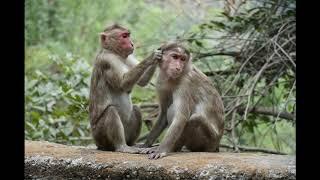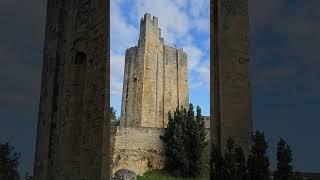
Three UNESCO Heritage Sites in Mumbai, Elephanta Caves / Три памятника ЮНЕСКО в Бомбее
Mumbai also known as Bombay , the official name until 1995) is the capital city of the Indian state of Maharashtra. According to United Nations, as of 2018, Mumbai was the second most populous city in India after Delhi and the seventh most populous city in the world with a population of 19.98 million. There are about 150 buildings above 150 m in the city
Mumbai is the financial, commercial[35] and entertainment capital of India. It is also one of the world's top ten centers of commerce in terms of global financial flow,[36] generating 6.16% of India's GDP[37] and accounting for 25% of industrial output, 70% of maritime trade in India
: Bombay was under Portuguese rule (1534–1661) and under British rule
The Mughal Empire, founded in 1526, was the dominant power in the Indian subcontinent during the mid-16th century.[96] Growing apprehensive of the power of the Mughal emperor Humayun, Sultan Bahadur Shah of Gujarat was obliged to sign the Treaty of Bassein with the Portuguese Empire on 23 December 1534. According to the treaty, the Seven Islands of Bombay, the nearby strategic town of Bassein and its dependencies were offered to the Portuguese.
Mumbai has three UNESCO World Heritage Sites, the Chhatrapati Shivaji Terminus, the Elephanta Caves and the Victorian and Art Deco Ensemble.
The Chhatrapati Shivaji Terminus, formerly known as Victoria Terminus, is the headquarters of the Central Railway. The station was designed by the consulting British architect Frederick William Stevens. Work began in 1878. He received ₹1,614,000 (US$23,000) as the payment for his services. Stevens earned the commission to construct the station after a masterpiece watercolour sketch by draughtsman Axel Haig.The final design bears some resemblance to St Pancras railway station in London. GG Scott's plans for Berlin's parliament building had been published four years before, and also has marked similarities to the station's design.The station took ten years to complete,[8] the longest for any building of that era in Bombay. In 1996, the station was renamed to Chhatrapati Shivaji Terminus in honour of Emperor Chhatrapati Shivaji, founder of the Maratha Empire.
Another UNESCO Heritage Site : Bombay High Court Headquarters of the Municipal Corporation of Greater Mumbai (MCGM), the largest civic organization in the country.
Gateway of India is an arch-monument erected to commemorate the landing in December 1911 at Apollo Bunder, Mumbai (then Bombay) of King-Emperor George V and Queen-Empress Mary, the first British monarch to visit India The final design of the monument by architect George Wittet was sanctioned only in 1914, and construction was completed in 1924. The structure is a triumphal arch made of basalt, which is 26 metres (85 feet) high.
Elephanta Caves are a UNESCO World Heritage Site and a collection of cave temples predominantly dedicated to the Hindu god Shiva. They are on Elephanta Island, or Gharapuri (literally "the city of caves"), in Mumbai Harbour, 10 kilometres (6.2 mi) east of Mumbai in the Indian state of Mahārāshtra. The island, about 2 kilometres (1.2 mi) west of the Jawaharlal Nehru Port, consists of five Hindu caves and a few Buddhist stupa mounds that date back to the 2nd century BCE, The carvings narrate Hindu mythologies, with the large monolithic 20 feet (6.1 m) Trimurti Sadashiva (three-faced Shiva), Nataraja (Lord of dance) and Yogishvara (Lord of Yoga) being the most celebrated.
Rostislav Bukasov and Olena Filchakova visited most of significant cultural/historic attractions in India , 24 UNESCO World Heritage Sites (UWHS), 37 cities and towns, including 6 out of 7 largest cities in India. 18000+ photos and videos are taken in 23 days. 10 domestic flights, more than 6000 km on Indian roads
After Mumbai, they took a flight to Aurangabad to visit another World Heritage UNESCO Site, Ajanta Caves, Video link
https://youtu.be/b6pcl1Sn520s
Ворота Индии - это арочный памятник, установленный в память о высадке в декабре 1911 года Аполлона Бандера, Мумбаи (тогда Бомбей), короля-императора Георга V и королевы-императрицы Марии, первого британского монарха, посетившего Индию. . Сооружение представляет собой триумфальную арку из базальта высотой 26 метров (85 футов).
Пещеры Элефанты являются объектом Всемирного наследия ЮНЕСКО и представляют собой коллекцию пещерных храмов, преимущественно посвященных индуистскому богу Шиве., относящихся ко 2-му веку до н.э., резные изображения повествуют об индуистских мифологиях с большими монолитными 20 футами 6.1 m) Тримурти Садашива (трехликий Шива), Натараджа (Владыка танца) и Йогишвара (Владыка Йоги) - самые знаменитые.
Ростислав Букасов и Елена Фильчакова посетили большинство значимых культурных / исторических достопримечательностей Индии, 24 объекта Всемирного наследия ЮНЕСКО, 37 городов и населенных пунктов, в том числе 6 из 7 крупнейших городов Индии. 18000+ фото и видео сделаны за 23 дня. 10 внутренних рейсов, более 6000 км по индийским дорогам
Mumbai is the financial, commercial[35] and entertainment capital of India. It is also one of the world's top ten centers of commerce in terms of global financial flow,[36] generating 6.16% of India's GDP[37] and accounting for 25% of industrial output, 70% of maritime trade in India
: Bombay was under Portuguese rule (1534–1661) and under British rule
The Mughal Empire, founded in 1526, was the dominant power in the Indian subcontinent during the mid-16th century.[96] Growing apprehensive of the power of the Mughal emperor Humayun, Sultan Bahadur Shah of Gujarat was obliged to sign the Treaty of Bassein with the Portuguese Empire on 23 December 1534. According to the treaty, the Seven Islands of Bombay, the nearby strategic town of Bassein and its dependencies were offered to the Portuguese.
Mumbai has three UNESCO World Heritage Sites, the Chhatrapati Shivaji Terminus, the Elephanta Caves and the Victorian and Art Deco Ensemble.
The Chhatrapati Shivaji Terminus, formerly known as Victoria Terminus, is the headquarters of the Central Railway. The station was designed by the consulting British architect Frederick William Stevens. Work began in 1878. He received ₹1,614,000 (US$23,000) as the payment for his services. Stevens earned the commission to construct the station after a masterpiece watercolour sketch by draughtsman Axel Haig.The final design bears some resemblance to St Pancras railway station in London. GG Scott's plans for Berlin's parliament building had been published four years before, and also has marked similarities to the station's design.The station took ten years to complete,[8] the longest for any building of that era in Bombay. In 1996, the station was renamed to Chhatrapati Shivaji Terminus in honour of Emperor Chhatrapati Shivaji, founder of the Maratha Empire.
Another UNESCO Heritage Site : Bombay High Court Headquarters of the Municipal Corporation of Greater Mumbai (MCGM), the largest civic organization in the country.
Gateway of India is an arch-monument erected to commemorate the landing in December 1911 at Apollo Bunder, Mumbai (then Bombay) of King-Emperor George V and Queen-Empress Mary, the first British monarch to visit India The final design of the monument by architect George Wittet was sanctioned only in 1914, and construction was completed in 1924. The structure is a triumphal arch made of basalt, which is 26 metres (85 feet) high.
Elephanta Caves are a UNESCO World Heritage Site and a collection of cave temples predominantly dedicated to the Hindu god Shiva. They are on Elephanta Island, or Gharapuri (literally "the city of caves"), in Mumbai Harbour, 10 kilometres (6.2 mi) east of Mumbai in the Indian state of Mahārāshtra. The island, about 2 kilometres (1.2 mi) west of the Jawaharlal Nehru Port, consists of five Hindu caves and a few Buddhist stupa mounds that date back to the 2nd century BCE, The carvings narrate Hindu mythologies, with the large monolithic 20 feet (6.1 m) Trimurti Sadashiva (three-faced Shiva), Nataraja (Lord of dance) and Yogishvara (Lord of Yoga) being the most celebrated.
Rostislav Bukasov and Olena Filchakova visited most of significant cultural/historic attractions in India , 24 UNESCO World Heritage Sites (UWHS), 37 cities and towns, including 6 out of 7 largest cities in India. 18000+ photos and videos are taken in 23 days. 10 domestic flights, more than 6000 km on Indian roads
After Mumbai, they took a flight to Aurangabad to visit another World Heritage UNESCO Site, Ajanta Caves, Video link
https://youtu.be/b6pcl1Sn520s
Ворота Индии - это арочный памятник, установленный в память о высадке в декабре 1911 года Аполлона Бандера, Мумбаи (тогда Бомбей), короля-императора Георга V и королевы-императрицы Марии, первого британского монарха, посетившего Индию. . Сооружение представляет собой триумфальную арку из базальта высотой 26 метров (85 футов).
Пещеры Элефанты являются объектом Всемирного наследия ЮНЕСКО и представляют собой коллекцию пещерных храмов, преимущественно посвященных индуистскому богу Шиве., относящихся ко 2-му веку до н.э., резные изображения повествуют об индуистских мифологиях с большими монолитными 20 футами 6.1 m) Тримурти Садашива (трехликий Шива), Натараджа (Владыка танца) и Йогишвара (Владыка Йоги) - самые знаменитые.
Ростислав Букасов и Елена Фильчакова посетили большинство значимых культурных / исторических достопримечательностей Индии, 24 объекта Всемирного наследия ЮНЕСКО, 37 городов и населенных пунктов, в том числе 6 из 7 крупнейших городов Индии. 18000+ фото и видео сделаны за 23 дня. 10 внутренних рейсов, более 6000 км по индийским дорогам
Комментарии:
How I Live Comfortably on a Part-Time Salary: Minimalism
Antonia & the Universe
Toggle Clamps - PA- 2056
Steel-Smith
St. Emilion UNESCO World Heritage site in Aquitaine, France
Rostislav Bukasov
EXTRANJEROS x EL MUNDO ( Ep. 215 Liza Rose / Rusia )
ExtranjerosXelmundO
The Ultimate RGH/JTAG Trinity Xbox 360 Build
TheModSmith


























